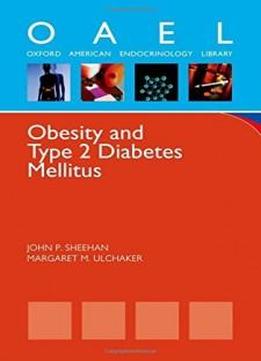
Obesity And Type 2 Diabetes Mellitus (oxford American Endocrinology Library)
by John P. Sheehan /
2011 / English / PDF
410.3 KB Download
With the advent of the worldwide obesity epidemic, a concurrent rise has occurred in the prevalence of type 2 diabetes mellitus and metabolic syndrome. Type 2 diabetes mellitus is affecting younger individuals-the disease is no longer exclusive to adulthood. Diabetic micro- and macrovascular complications are also occurring at an earlier age, leading to increasing demands and costs on the healthcare system. In addition, the morbidity, disability and premature death caused by diabetic complications create a huge burden to families, employers and society at large. Thankfully, there has been a tremendous growth in new therapeutic classes of medications to help manage type 2 diabetes mellitus. These agents target many of the pathophysiologic defects of the disease with fewer side effects than the older agents. Newer insulin formulations have more predictable kinetics so patients can achieve better glycemic control with less risk of hypoglycemia and weight gain. Insulin delivery devices have also improved to include higher quality insulin pens, finer and shorter pen needles, and more technologically advanced insulin pumps.
As part of the
Oxford American Endocrinology Library
series, this handbook reviews the epidemiology and pathophysiology of obesity and type 2 diabetes mellitus. The content covers micro- and macrovascular diabetic complications, the array of glucose regulating therapies, treatment algorithms targeting the pathophysiologic defects of type 2 diabetes mellitus as well as strategies for macrovascular risk reduction via therapeutic lifestyle change (diet, exercise, smoking cessation), pharmacotherapeutic treatment of dyslipidemia and hypertension, bariatric surgery and subcutaneous insulin infusion therapy, among other topics. Because of the concise yet comprehensive nature of the handbook, this volume is an excellent point-of-care reference for the clinician who regulary treats obese and diabetic patients.











